Jean-Michel Othoniel takes over Avignon for his biggest ever exhibition
Originally approached by Avignon to mark their 25th anniversary as the European Capital of Culture, Jean-Michel Othoniel more than rose to the challenge, installing 270 artworks around the city
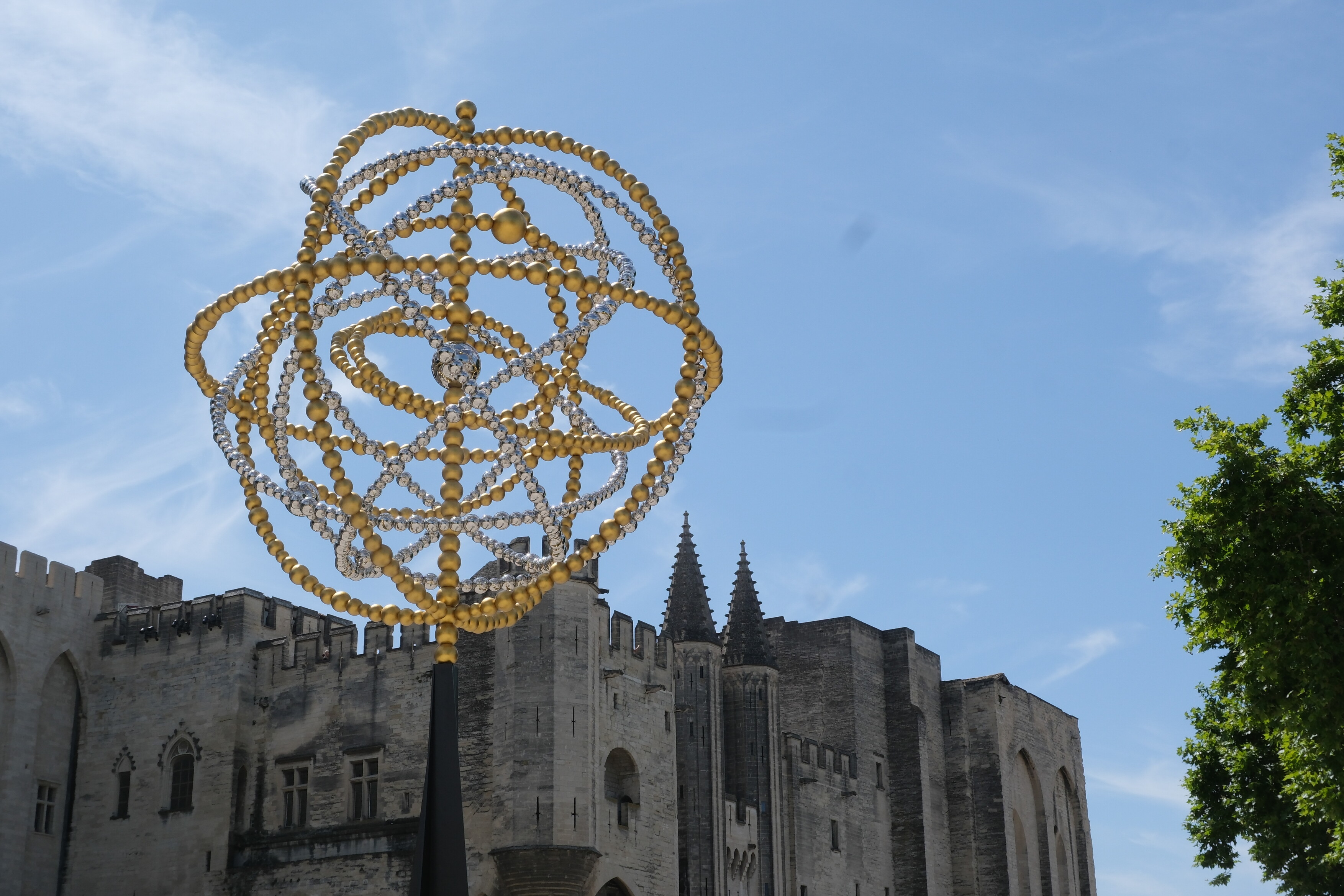
Breakaway popes, medieval love sonnets, a theatre festival, a bridge from a children's song... Avignon is overflowing with history and culture. Two years ago, the city asked Jean-Michel Othoniel to create an exhibition marking its 25th anniversary as European Capital of Culture and 30th year as a UNESCO World Heritage site in 2025.
'I could have done just the Palais des Papes and maybe one museum,' the French artist says, 'but I wanted to do something on a massive scale, and they accepted.'
He ended up installing 270 different artworks (140 of them new) in 10 locations throughout the city. In a year replete with solo shows in Brazil, Shanghai and Cannes, this is the soft-spoken 61-year-old artist's biggest exhibition ever – and maybe one of the biggest for any artist, period. It's nearly impossible to go to Avignon right now without coming across Othoniel's creations, in the Palais des Papes, city museums, public courtyards, on building facades, and the medieval St Bénezet bridge (the pont from the song) which heralds visitors with his gold-and-glass reinterpretation of local mariners' crosses.
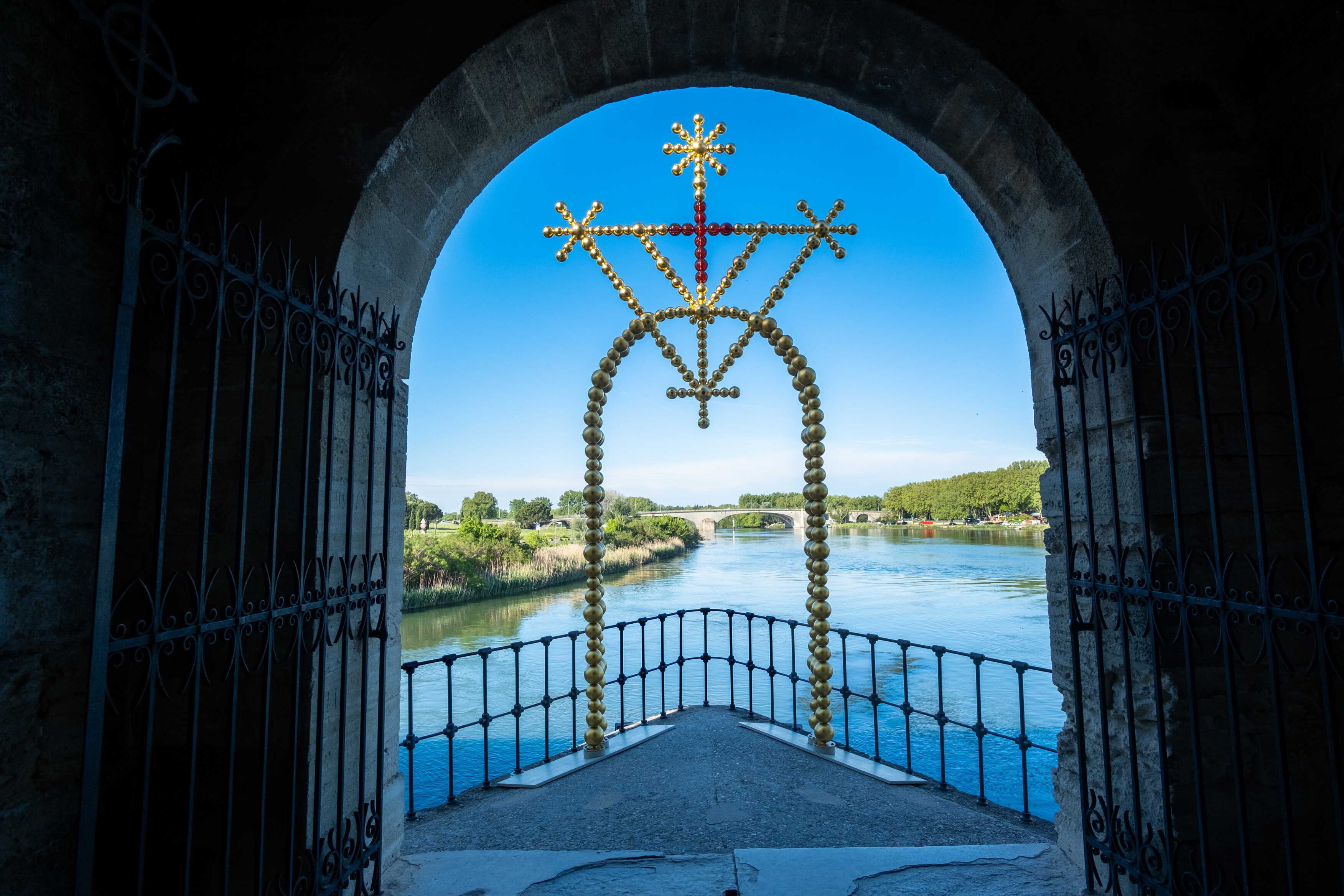
Jean-Michel Othoniel at La Porte des Navigateurs
Othoniel's work looks deceptively simple: blown glass, stainless steel, gold leaf and other materials turned into sensuous beads and bricks, used to form necklaces, flowers, fountains, crosses and more. It's not. Putting this show together was a marathon that took a team of hundreds – his studio, glassblowers from Switzerland to Italy to India, metalworkers, gilders, lithographers, shippers, even dancers (Othoniel is producing a two-day performance at the Palais des Papes in August, choreographed by Carolyn Carson for dancers Hugo Marchand and Caroline Osmont). An engineer guaranteed that none of the monumental pieces would collapse or be destroyed by the mighty mistral wind. A lighting designer emphasised the play of shadows between artworks and medieval stone. The show required nearly six weeks to install, much of it overnight, since the Palais des Papes is open to the public 365 days a year. 'I feel like I’m jetlagged in my own country,' Othoniel said, days before the official opening. (His studio team looked equal parts exhilarated and exhausted.)
For the theme, the artist delved into the rich history of Avignon and took the Italian poet Petrarch as his jumping-off point. One spring day in 1327, Petrarch spotted a young married woman named Laure in the city's Sainte-Claire church and fell obsessively in love, writing 366 poems, mostly sonnets, about his unrequited passion. 'The strength of this poetry is that it's based on a story with a precise date and location, but you can also see it as conceptual,' says Othoniel. 'It has inspired generations of artists because it's an artistic engagement, and therefore radical. The idea of speaking about one sentiment in many, many different ways.'
He sees each individual exhibition in this show as a sonnet, creating a constellation of desire that explores the different facets of love, from human passion to the passion of the Christ. His 'Coeur,' a large blood-red glass heart, now graces the Chapelle Saint-Claire, the remnants of the place where Petrarch first set eyes on Laure. But the real heart of this show is the Palais des Papes, an imposing stone palace the size of four Gothic cathedrals, and seat of the Catholic church for much of the 14th century.
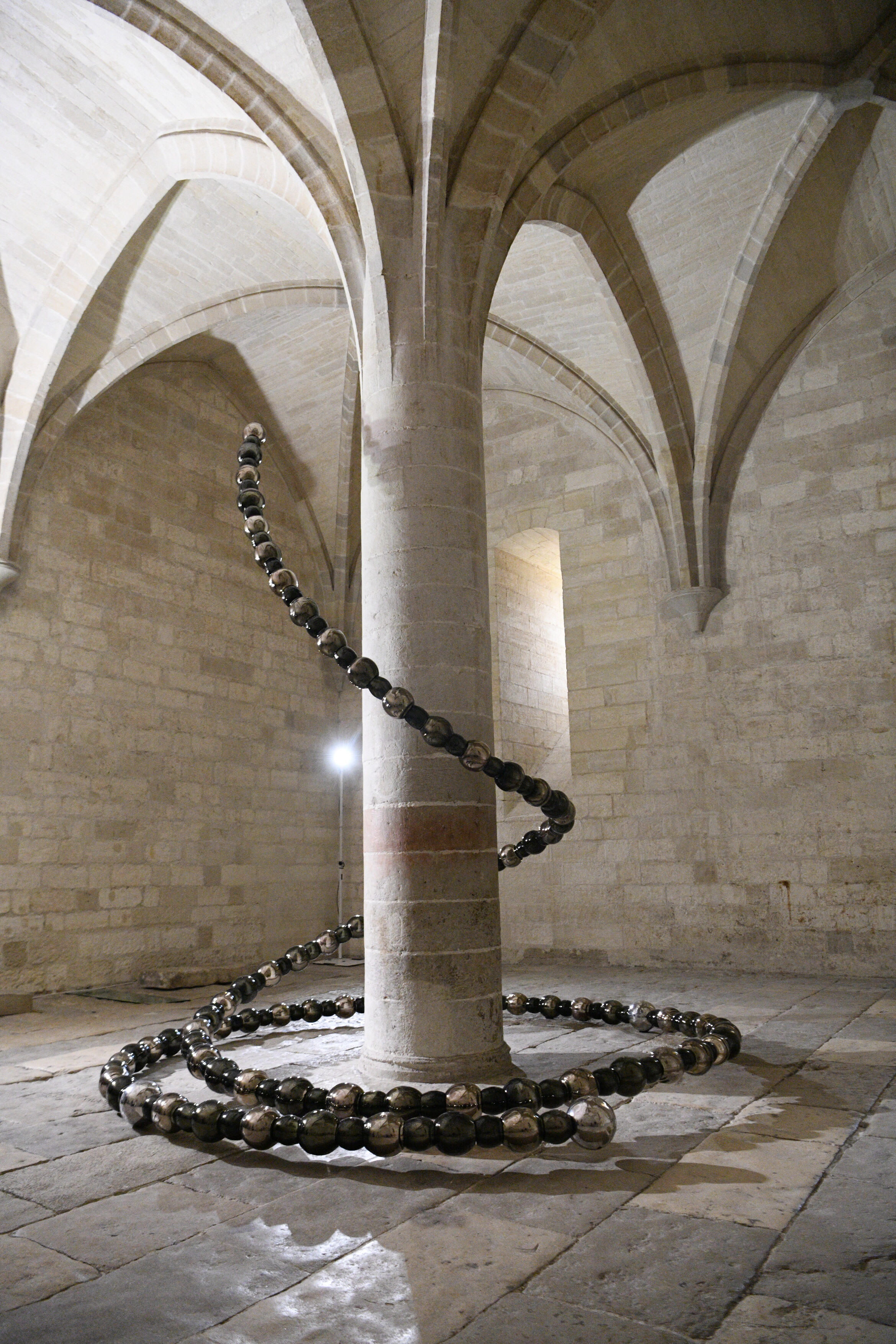
Jean-Michel Othoniel at Le grand Lasso
Othoniel has scattered 133 pieces throughout the building: suspended glass sculptures representing zodiac signs, a glass-and-gold fountain in the medieval gardens, a stainless steel brick 'Yardang' like a column of sand in a desert storm, 60 ink paintings of flowers on white gold leaf, a 'tomb of love' where an empty rectangular space glows within a carpet of gleaming bricks whose blue matches the lapis lazuli of 14th-century frescos above.
Receive our daily digest of inspiration, escapism and design stories from around the world direct to your inbox.
The Palais des Papes is a UNESCO World Heritage site, so there’s no question of drilling holes in its stones. Nonetheless, four enormous 'Cosmos' spheres made of gilded stainless steel beads, each 5 metres across and weighing around 500 kilos, hang in the Grand Chapel. Othoniel explains that his team spotted four tiny existing holes in the vaulted stone ceiling and used them. 'The ceiling isn't solid enough to hang something from, so we built a metal structure above it. It's an incredible work of engineering that you don't see at all.'
In the former papal bedroom, which boasts stunning frescos of sweeping vines on the walls, Othoniel installed a glass sculpture with the same knotted swirls in a corner fireplace. He says, 'The only thing that wasn't classified in this room was the hearth, so I had a blast creating a sculpture that looks like it escaped from the fresco to settle here.'
Elsewhere in the city, his works play off everything from an early Renaissance Virgin and Child to a former bathhouse. For the Petit Palace Louvre d’Avignon, Othoniel created gold-rimmed glass rings in the exact diameter and positioned precisely the same way as halos in works by Botticelli, Strozzi, and others. In the Lapidaire museum, his 'Wonder Block' coloured glass columns stand alongside ancient Egyptian funeral stelae. At the Calvet Museum, 19th-century marble maidens sit, strut and swoon around his gilded lotus flower sculpture. Next door, Othoniel's illuminated herbarium mirrors a natural history museum's collection of up to 300,000 plant specimens. At the Bains Pommer (public baths run by the same family from 1890 to 1972, and reopened as a museum just weeks ago), porcelain bathtubs share numbered treatment rooms with the sounds of trickling water from Othoniel's delicate glass fountains.
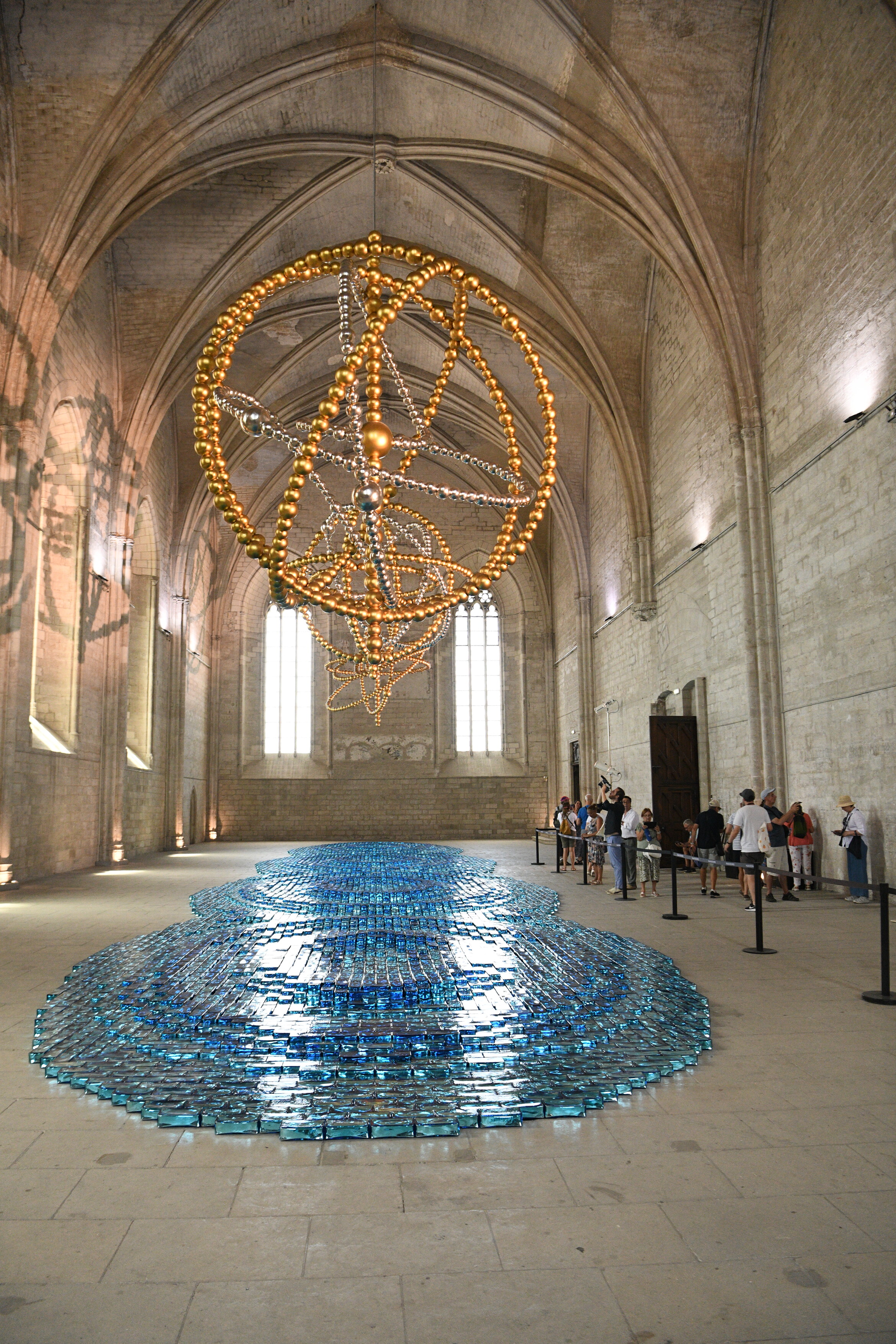
Jean-Michel Othoniel at Les Cosmos
Othoniel's homage to 20th-century art, notably minimalism, is displayed at the Collection Lambert, where he has chosen a number of works to show alongside certain pieces of his own. His carpet of caramel-hued glass bricks, blown in India, is not only a reference to the brick pyres upon which Indians burn their dead, but also a tribute to Carl André’s copper plates on the floor. A horizontal 'Oracle' sculpture, green bricks forming a long rectangular box on the wall, echoes an enameled steel work in a similar format by Donald Judd. An early open necklace of multicolored Murano glass beads hangs in a room with André Cadere’s multicoloured poles.
The name that Othoniel gave to this colossal show is 'Cosmos ou Les Fantômes de l'Amour' (Cosmos or the ghosts of love). He says the stars aligned to make it happen. 'This is a moment when I'm in full possession of my skills, I have a team that works well, I can count on my gallery to produce my works. All around me, there are constellations that function.'
OTHONIEL COSMOS ou Les Fantômes de L'Amour runs until 4 January 2026
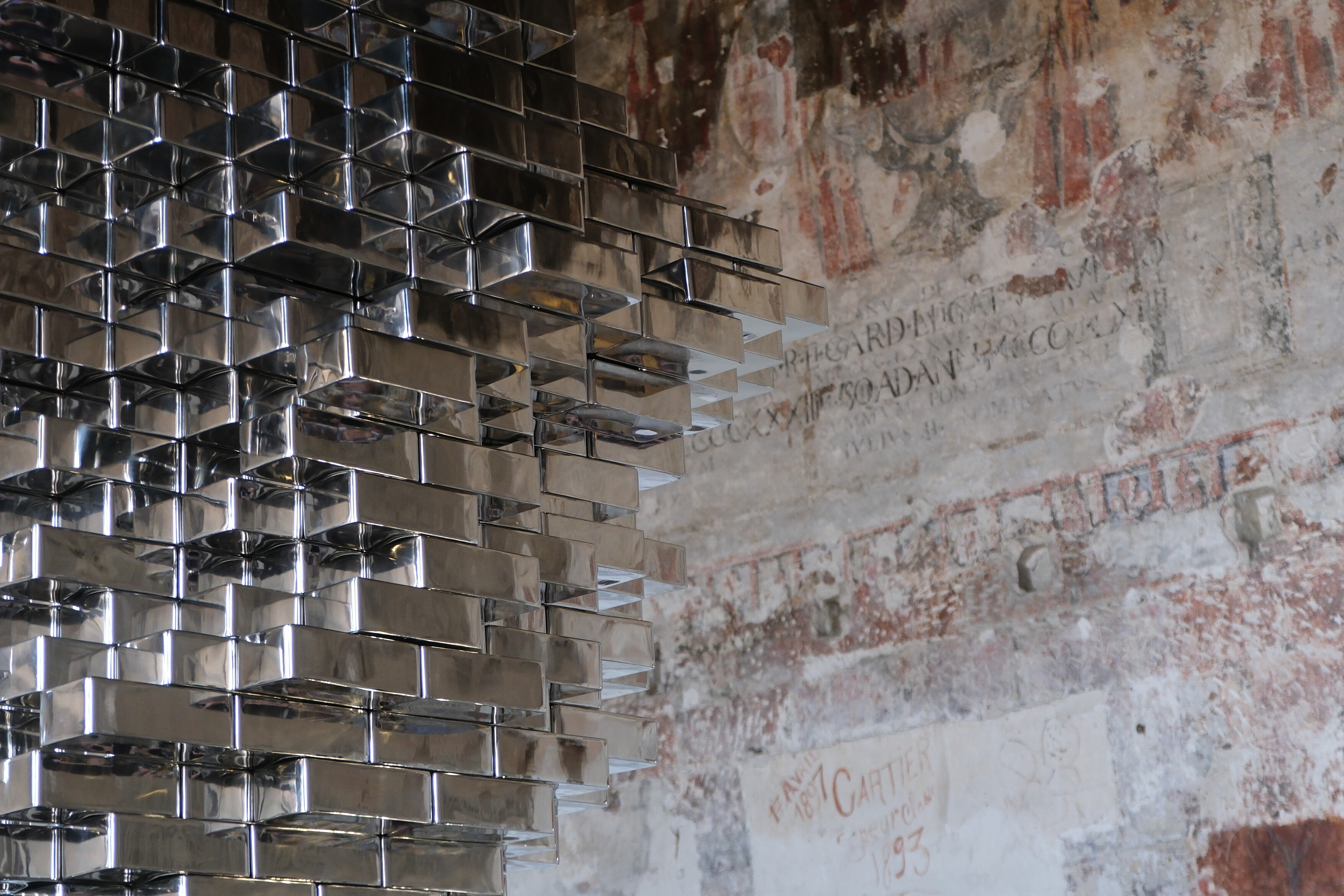
Jean-Michel Othoniel at Yardang
Amy Serafin, Wallpaper’s Paris editor, has 20 years of experience as a journalist and editor in print, online, television, and radio. She is editor in chief of Impact Journalism Day, and Solutions & Co, and former editor in chief of Where Paris. She has covered culture and the arts for The New York Times and National Public Radio, business and technology for Fortune and SmartPlanet, art, architecture and design for Wallpaper*, food and fashion for the Associated Press, and has also written about humanitarian issues for international organisations.
-
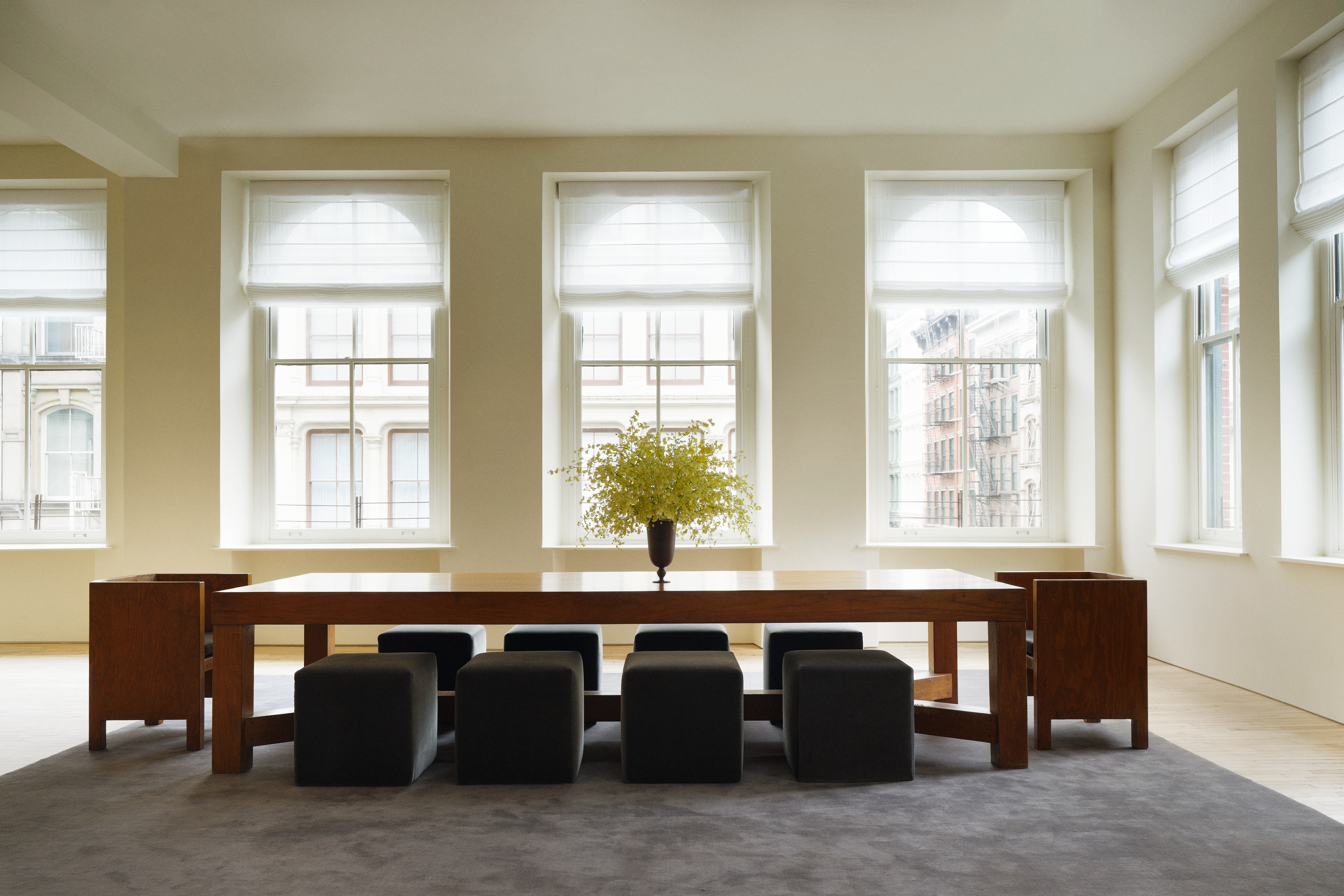 Tour Aflalo’s first retail space, a gallery-like studio in New York
Tour Aflalo’s first retail space, a gallery-like studio in New YorkLight-filled and elegant, Aflalo has opened its first retail space in a classic Soho loft, reimagined by Nordic Knots Studio
-
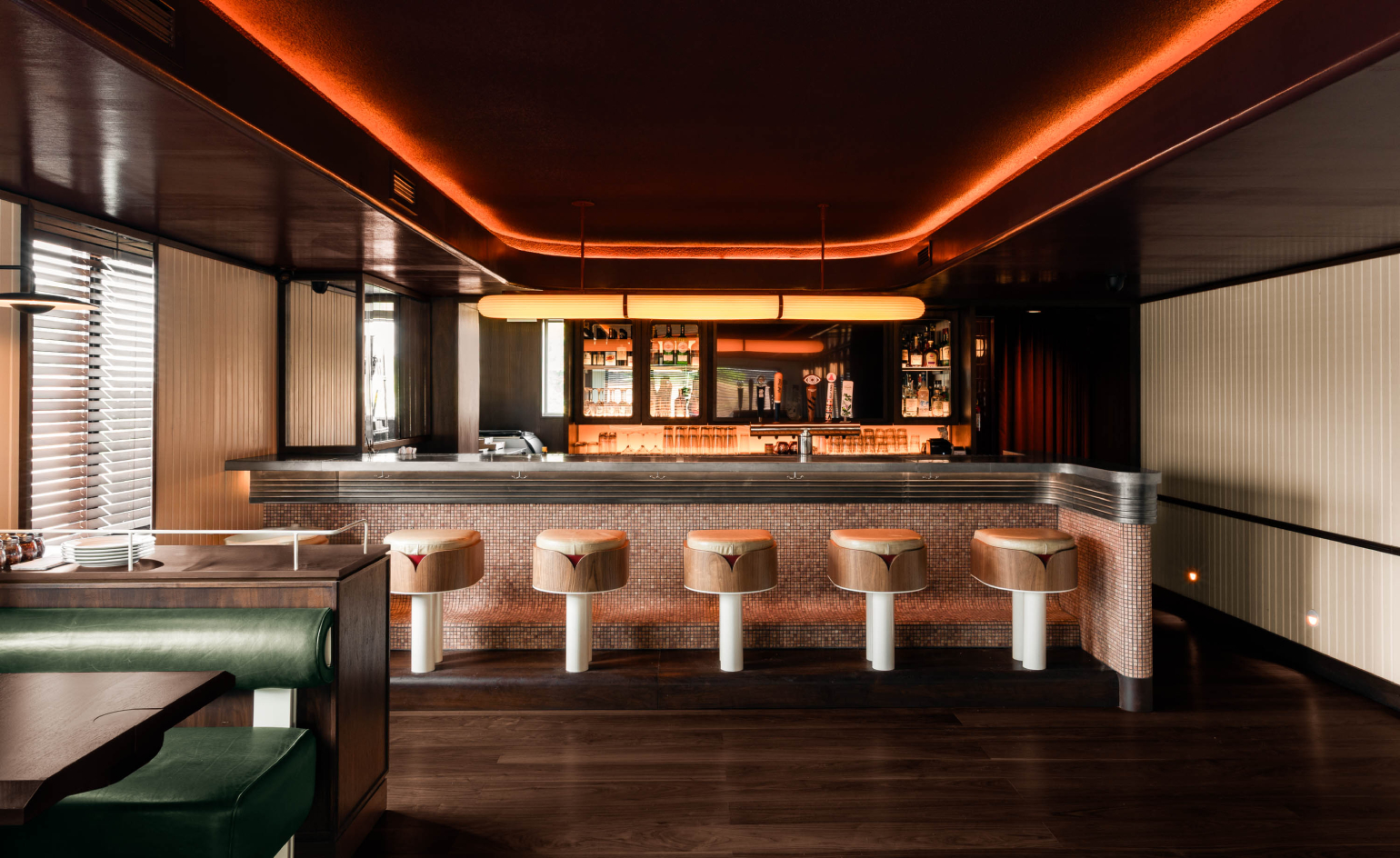 This Toronto pizzeria hides a sultry bar with serious bite
This Toronto pizzeria hides a sultry bar with serious biteNorth of Brooklyn unveils a fresh, two-level outpost where crisp, light-filled minimalism gives way to a warmer, neon-lit upstairs area
-
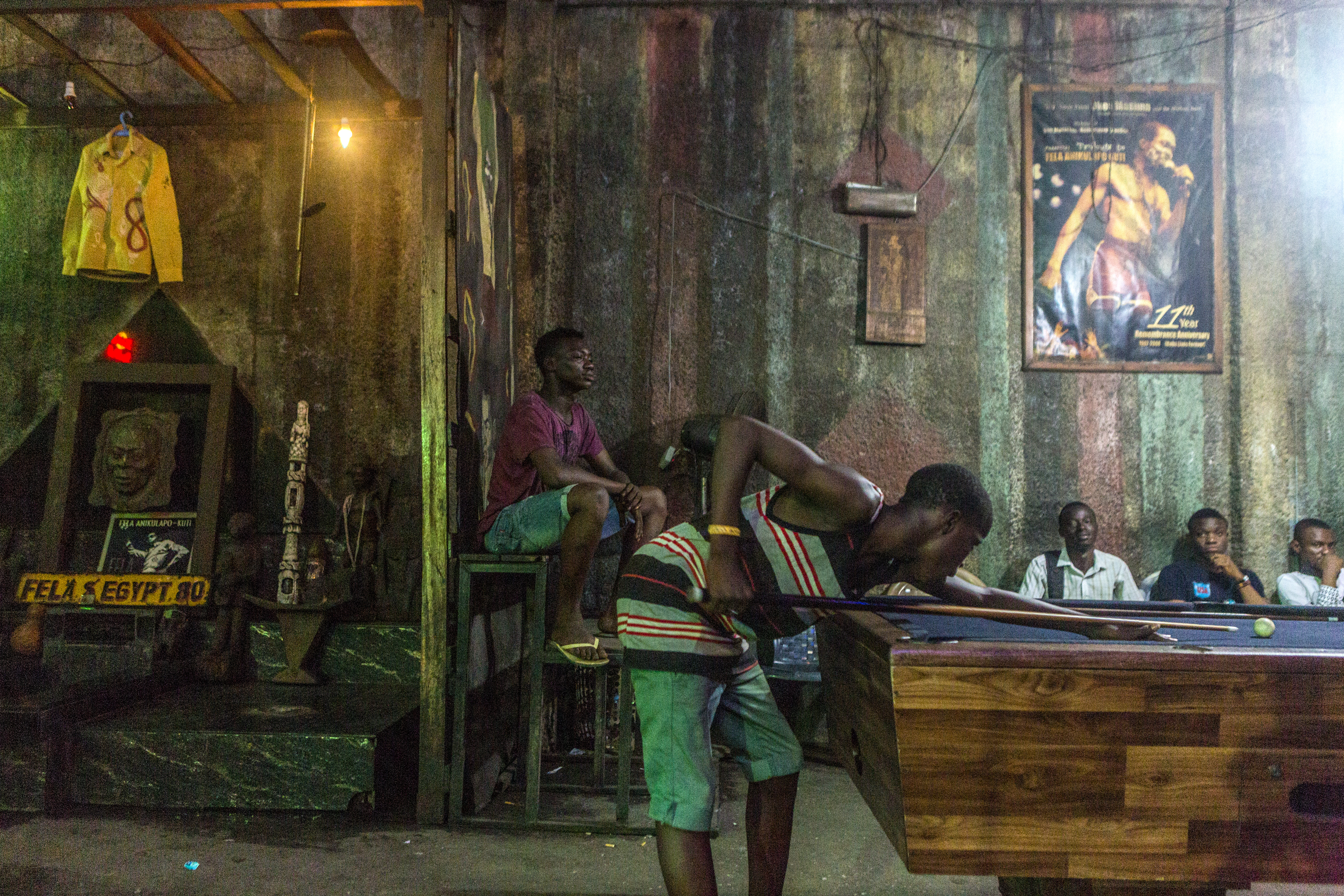 A Lagos exhibition celebrates Fela Kuti's defining sound
A Lagos exhibition celebrates Fela Kuti's defining soundAn exhibition, Afrobeat Rebellion, currently showing at the Ecobank PanAfrican Centre in Lagos, explores the life of Afrobeat father Fela Anikulapo-Kuti
-
 Joel Quayson’s winning work for Dior Beauty at Arles considers the theme ‘Face-to-Face’ – watch it here
Joel Quayson’s winning work for Dior Beauty at Arles considers the theme ‘Face-to-Face’ – watch it hereQuayson, who has won the 2025 Dior Photography and Visual Arts Award for Young Talents at Arles, imbues his winning work with a raw intimacy
-
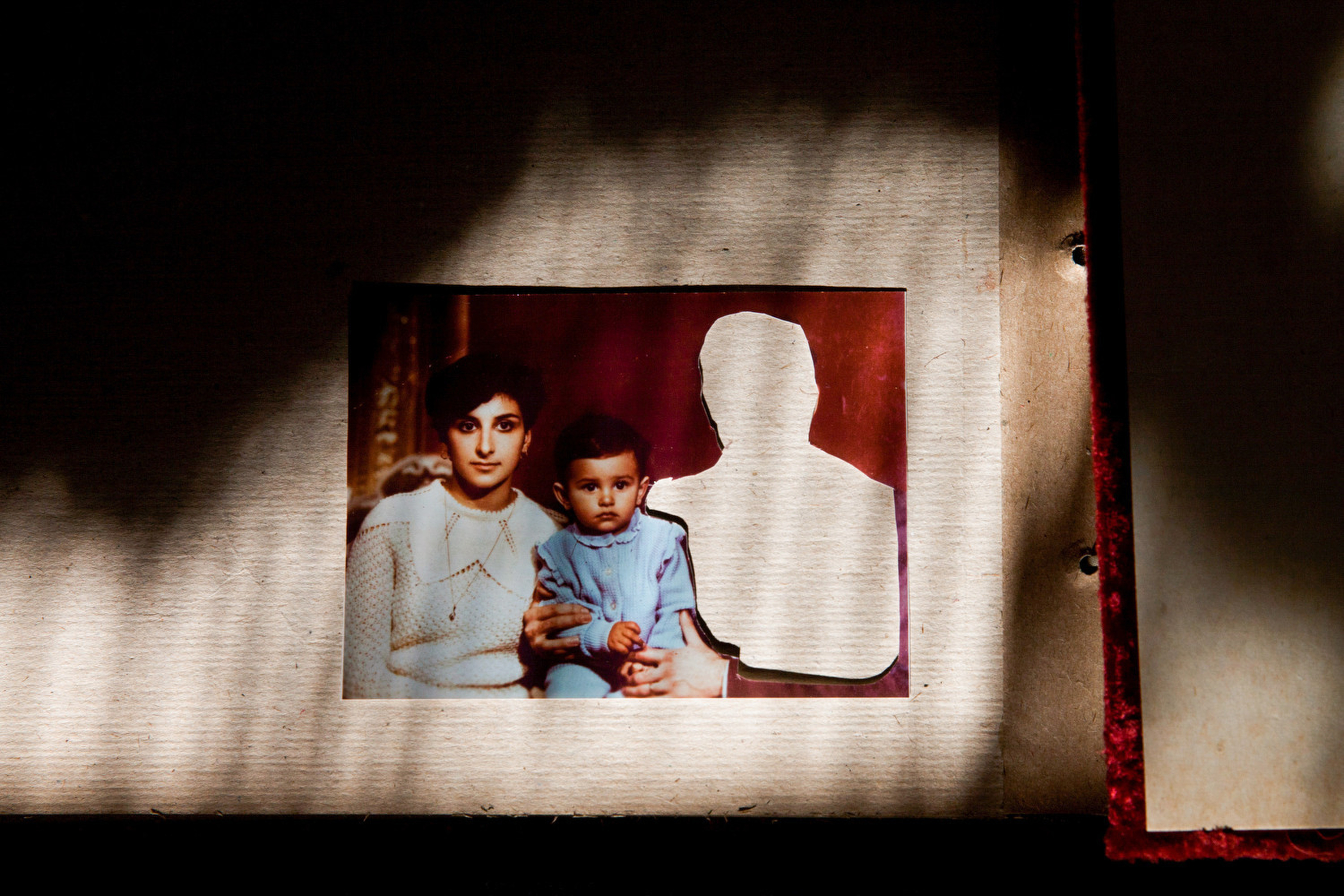 What to see at Rencontres d’Arles 2025, questioning power structures in the state and family
What to see at Rencontres d’Arles 2025, questioning power structures in the state and familySuppressed memories resurface in sharply considered photography at Rencontres d'Arles 2025. Here are some standout photographers to see
-
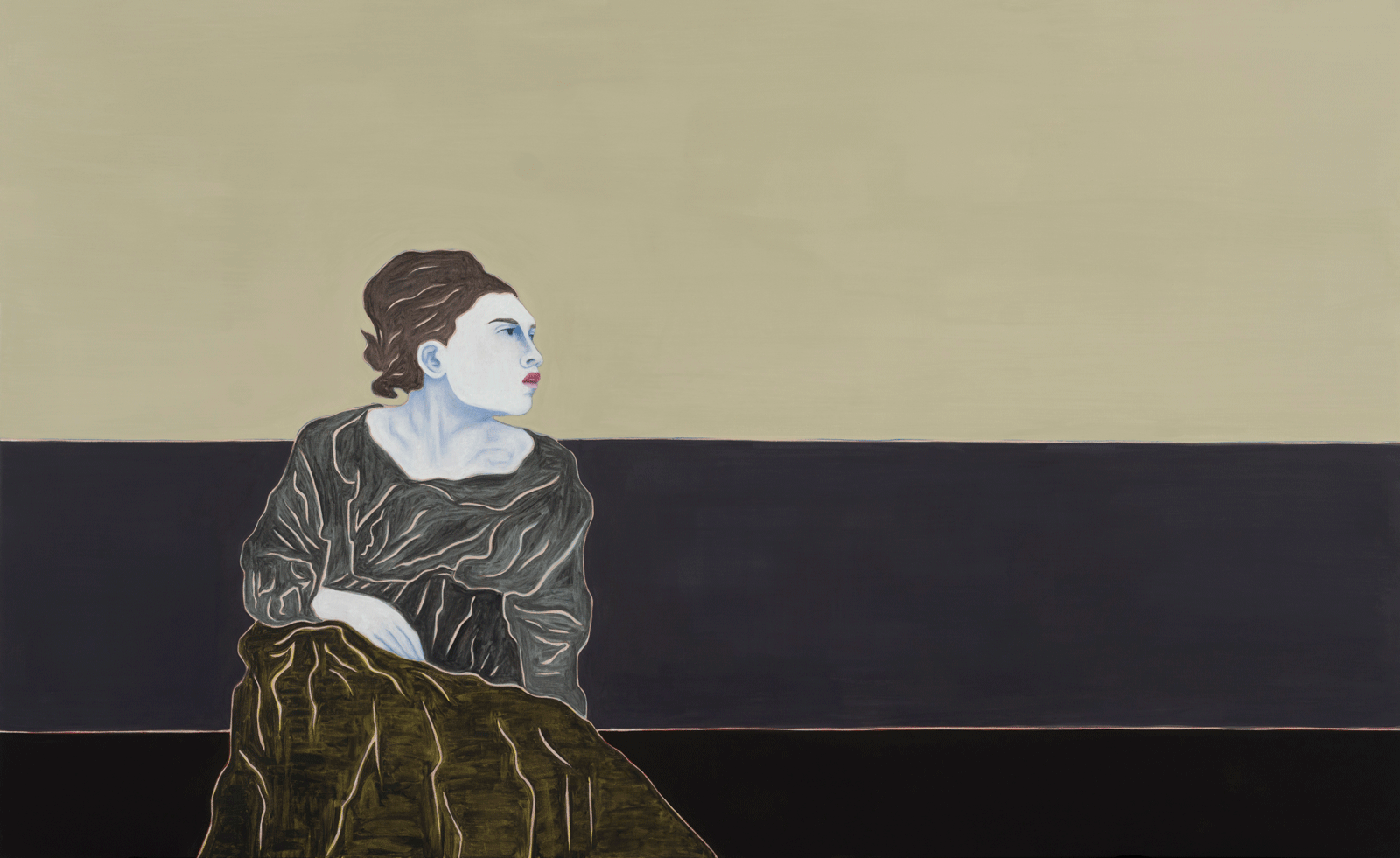 ‘With a small gesture of buying a postcard, we all become copyists’: the Louvre’s celebration of copying speaks to human nature
‘With a small gesture of buying a postcard, we all become copyists’: the Louvre’s celebration of copying speaks to human natureContemporary artists are invited to copy works from the Louvre in a celebration of the copyist’s art, a collaboration with Centre Pompidou-Metz
-
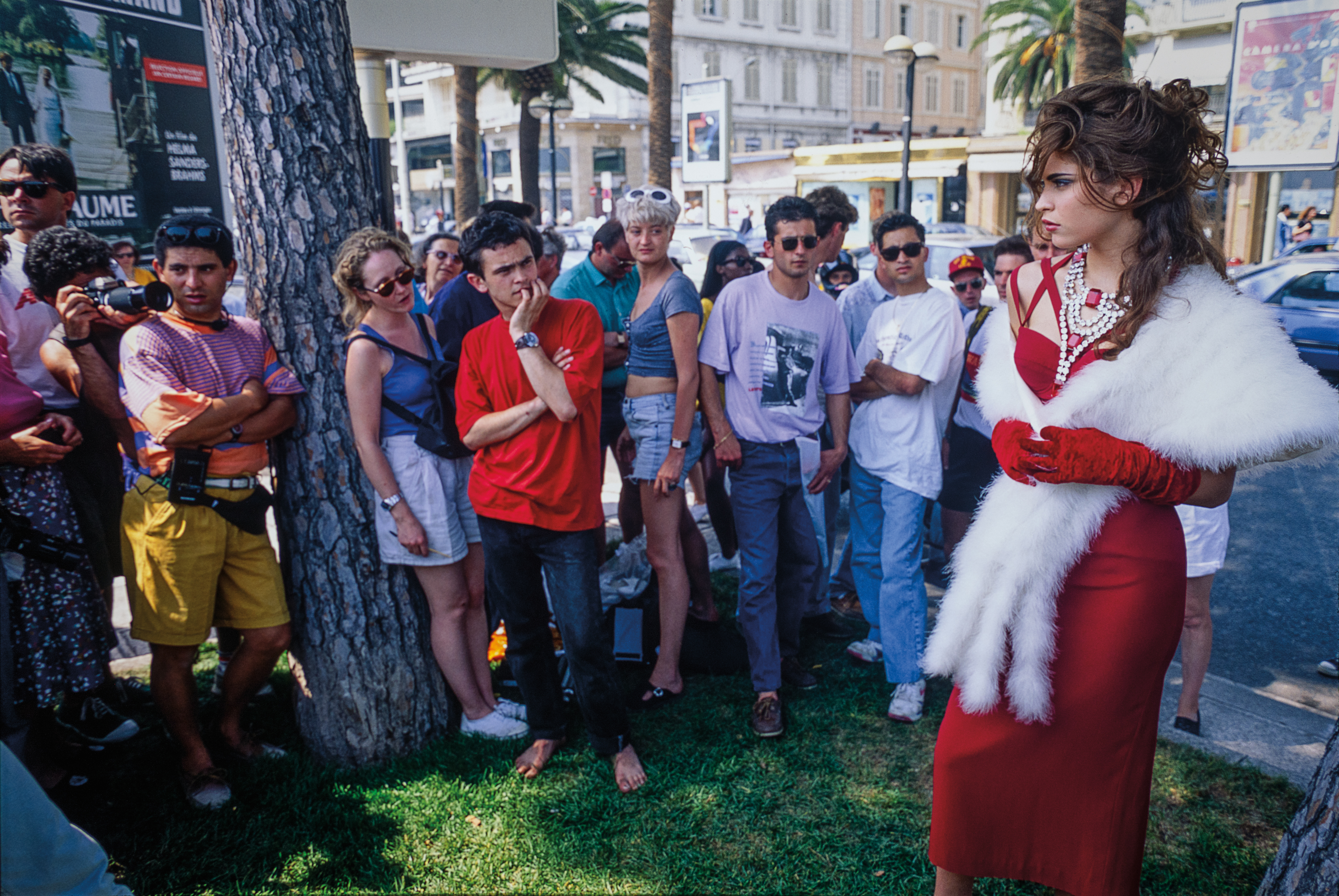 The glory years of the Cannes Film Festival are captured in a new photo book
The glory years of the Cannes Film Festival are captured in a new photo book‘Cannes’ by Derek Ridgers looks back on the photographer's time at the Cannes Film Festival between 1984 and 1996
-
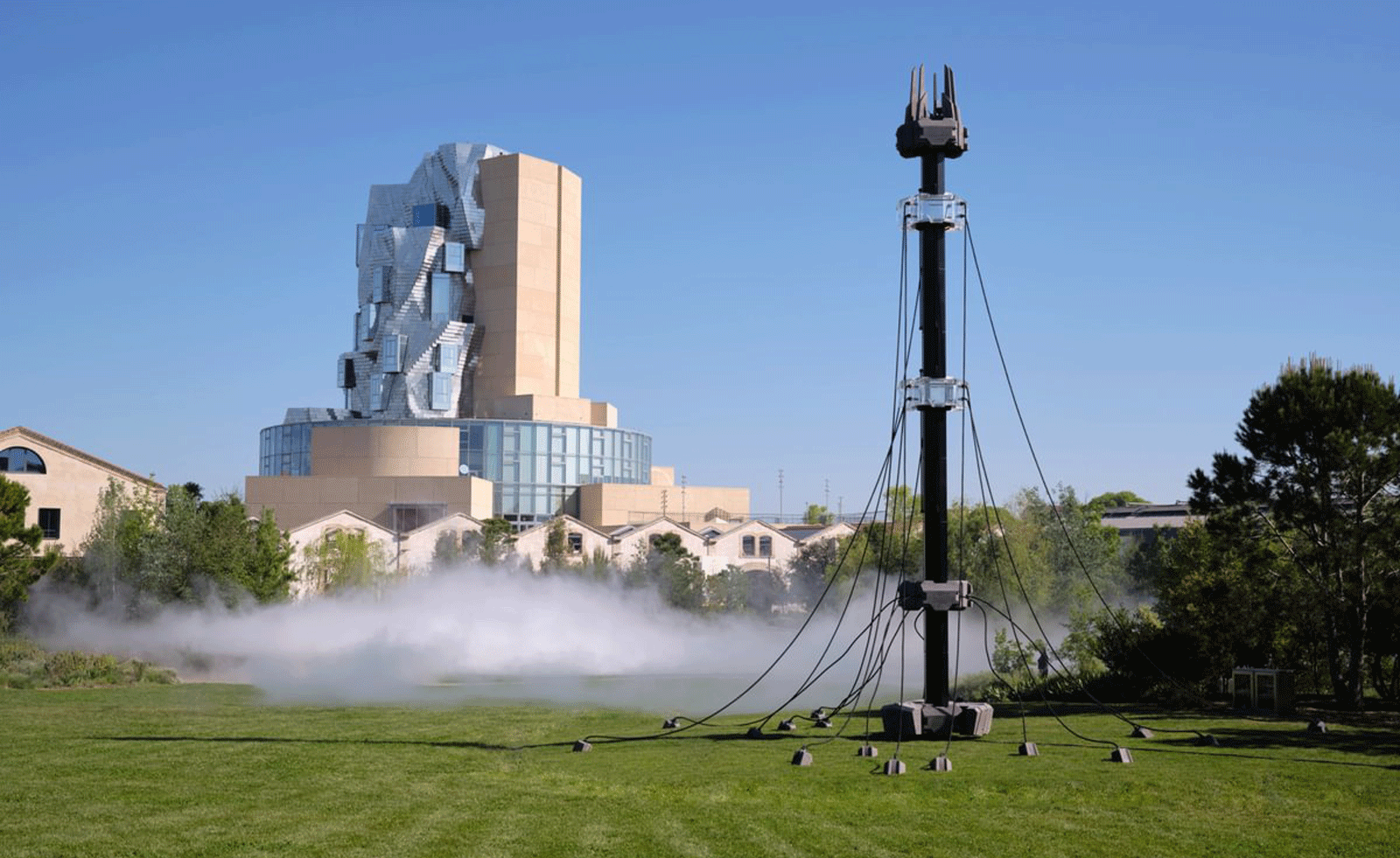 Technology, art and sculptures of fog: LUMA Arles kicks off the 2025/26 season
Technology, art and sculptures of fog: LUMA Arles kicks off the 2025/26 seasonThree different exhibitions at LUMA Arles, in France, delve into history in a celebration of all mediums; Amy Serafin went to explore
-
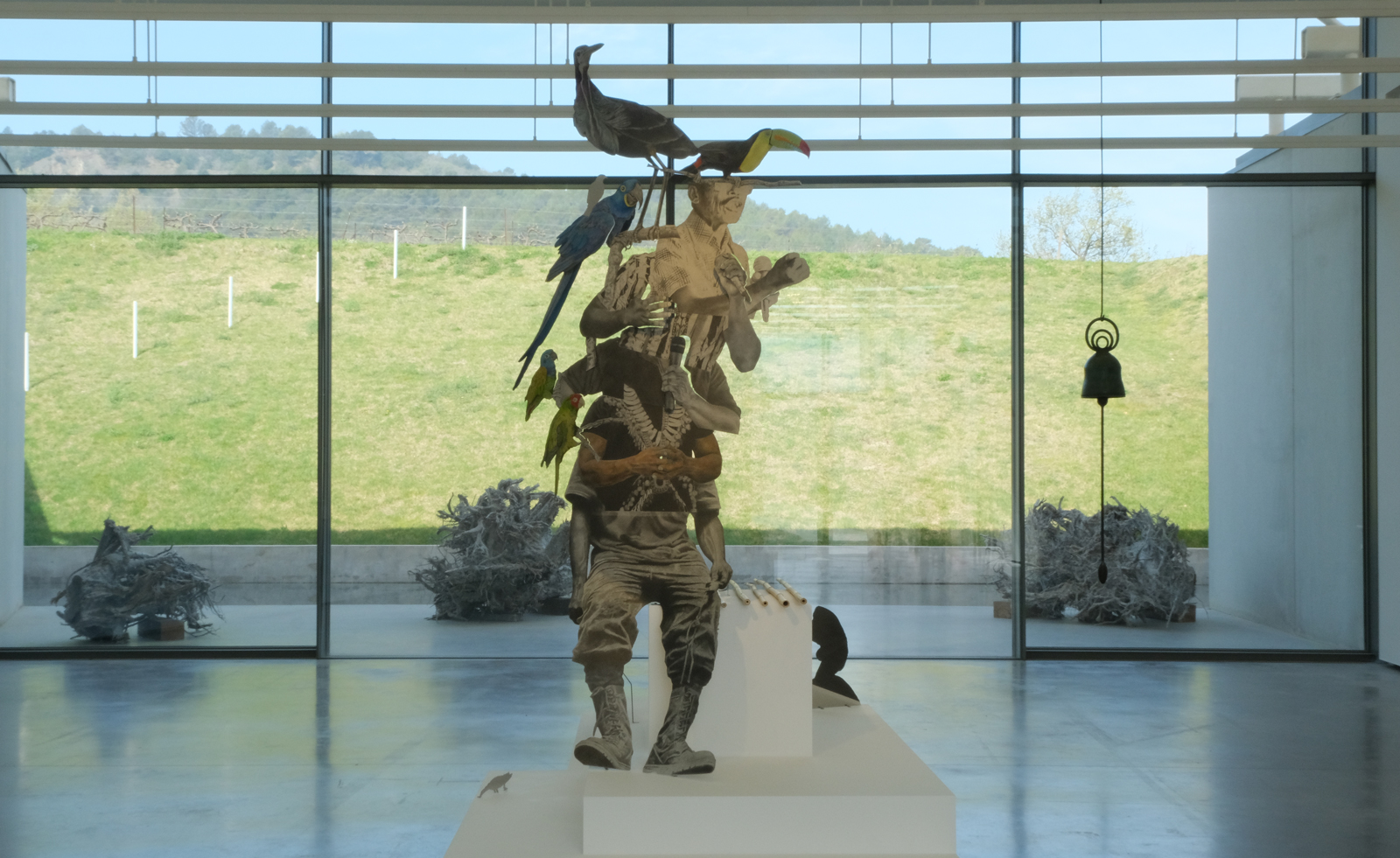 Contemporary artist collective Poush takes over Château La Coste
Contemporary artist collective Poush takes over Château La CosteMembers of Poush have created 160 works, set in and around the grounds of Château La Coste – the art, architecture and wine estate in Provence
-
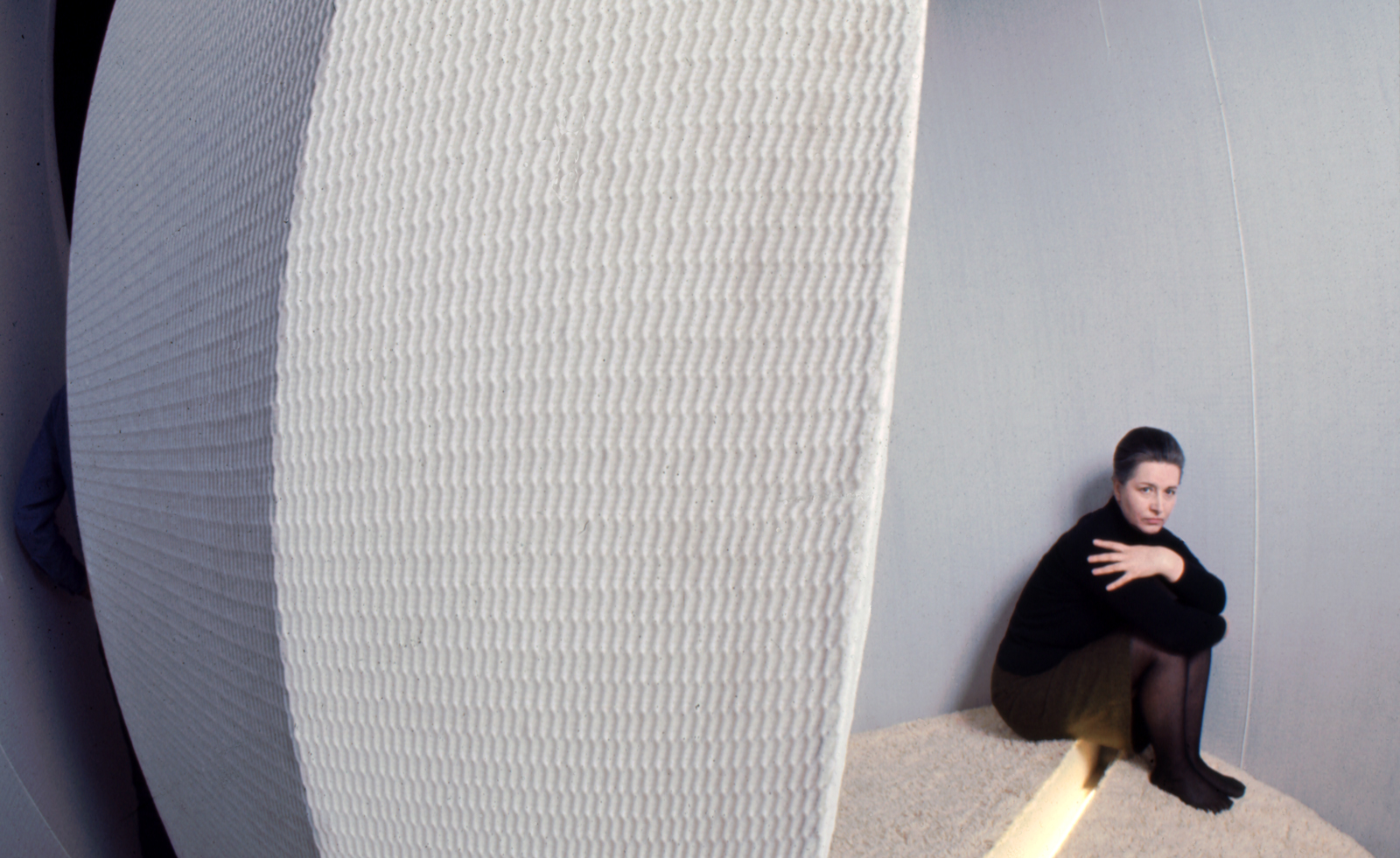 Architecture, sculpture and materials: female Lithuanian artists are celebrated in Nîmes
Architecture, sculpture and materials: female Lithuanian artists are celebrated in NîmesThe Carré d'Art in Nîmes, France, spotlights the work of Aleksandra Kasuba and Marija Olšauskaitė, as part of a nationwide celebration of Lithuanian culture
-
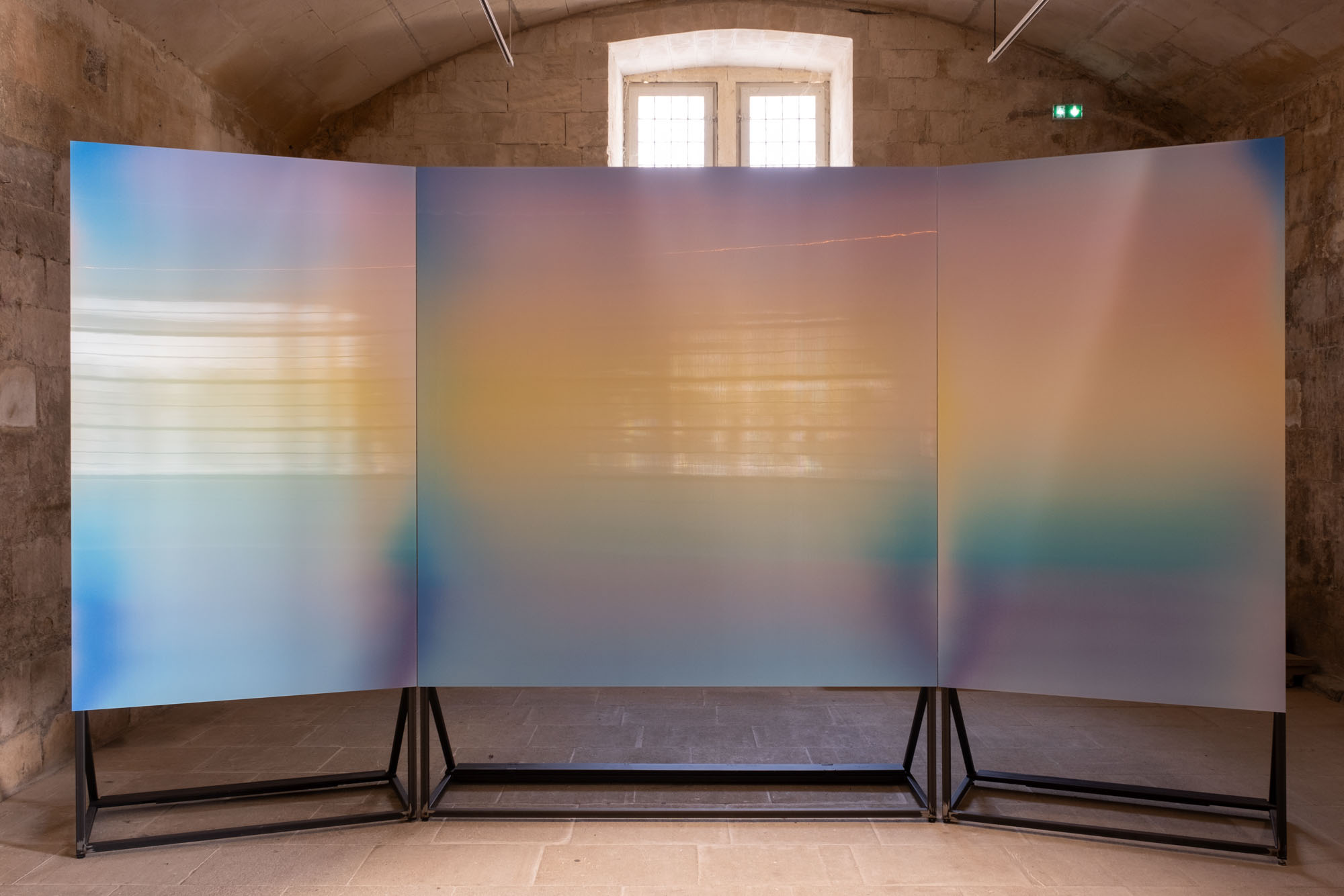 ‘Who has not dreamed of seeing what the eye cannot grasp?’: Rencontres d’Arles comes to the south of France
‘Who has not dreamed of seeing what the eye cannot grasp?’: Rencontres d’Arles comes to the south of FranceLes Rencontres d’Arles 2024 presents over 40 exhibitions and nearly 200 artists, and includes the latest iteration of the BMW Art Makers programme